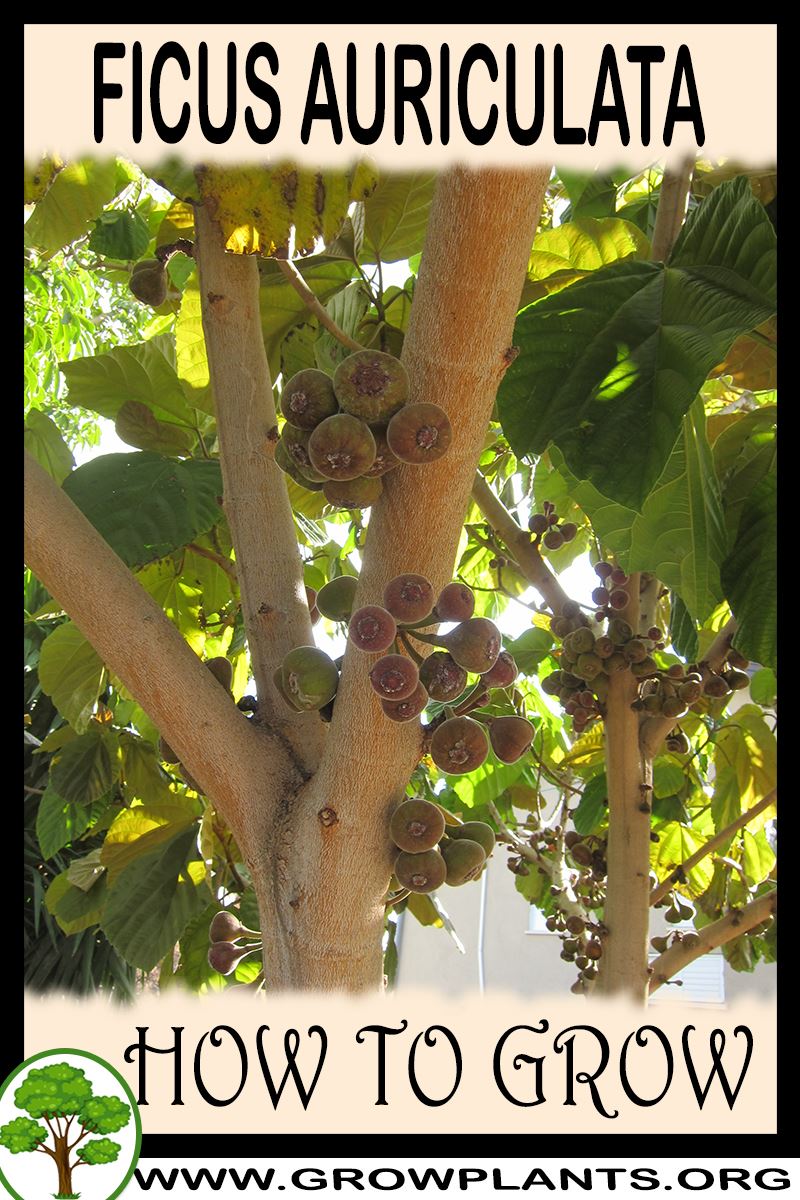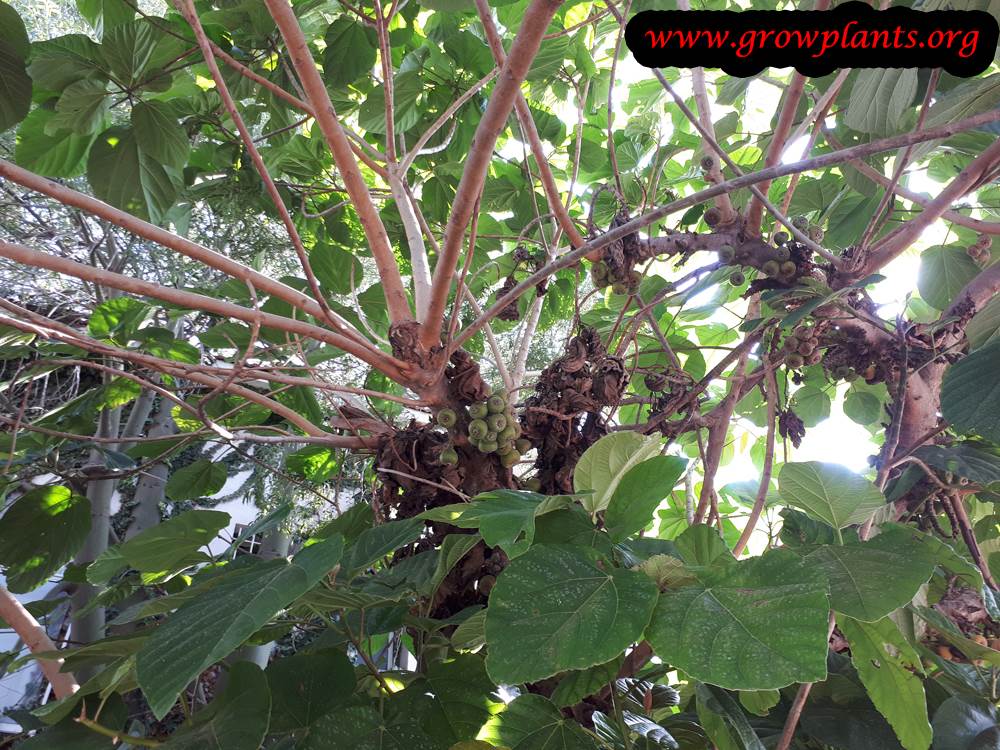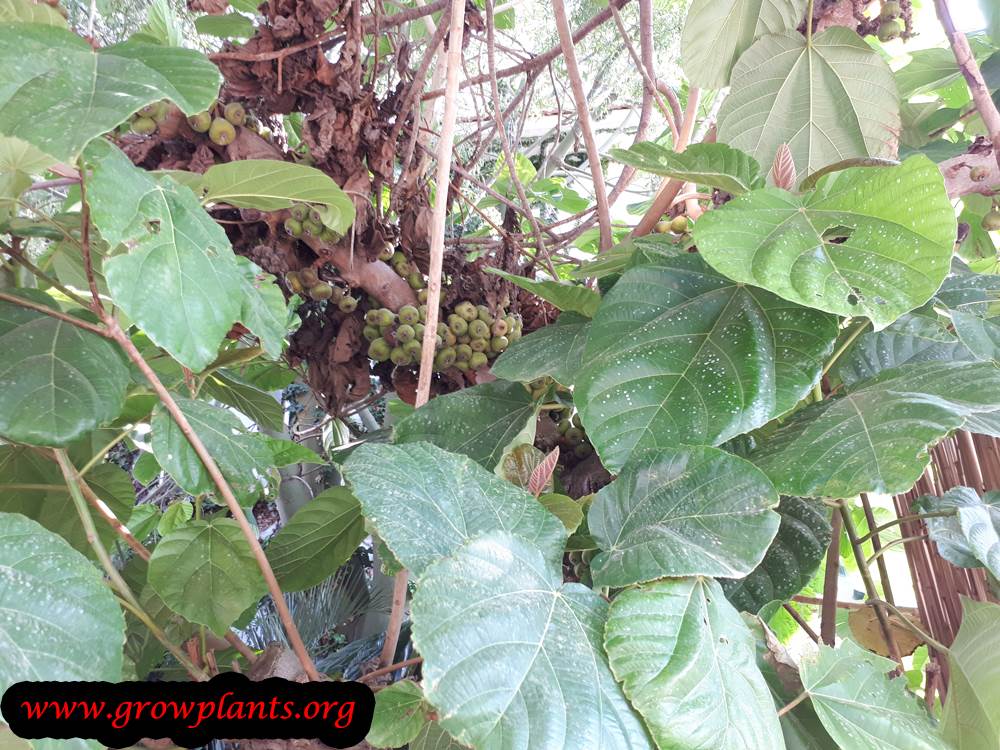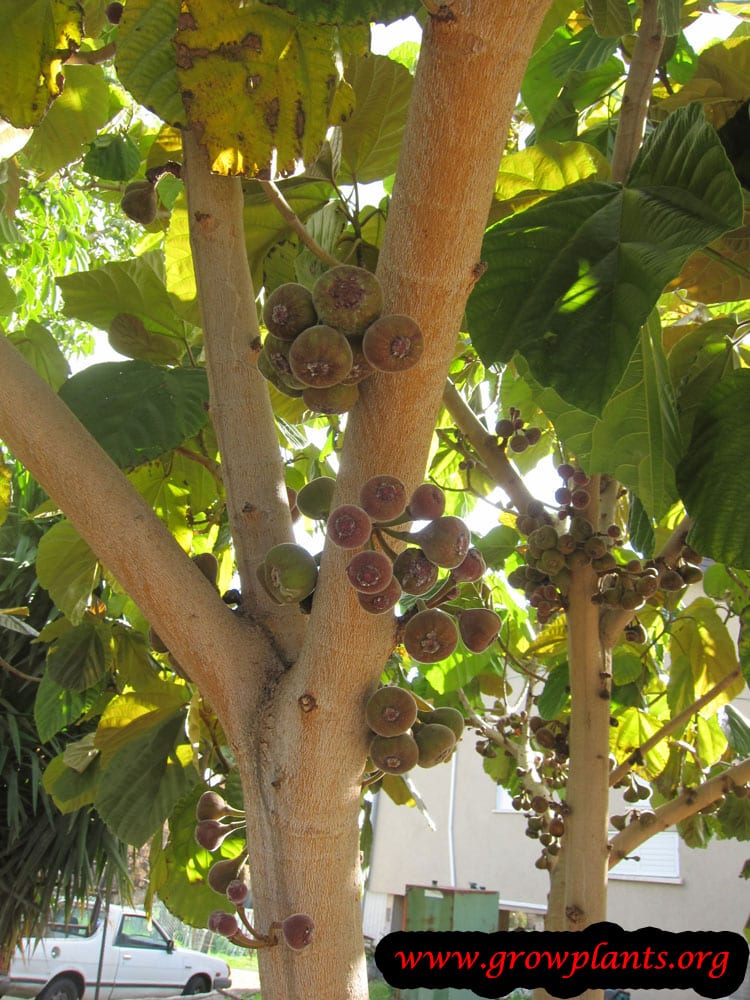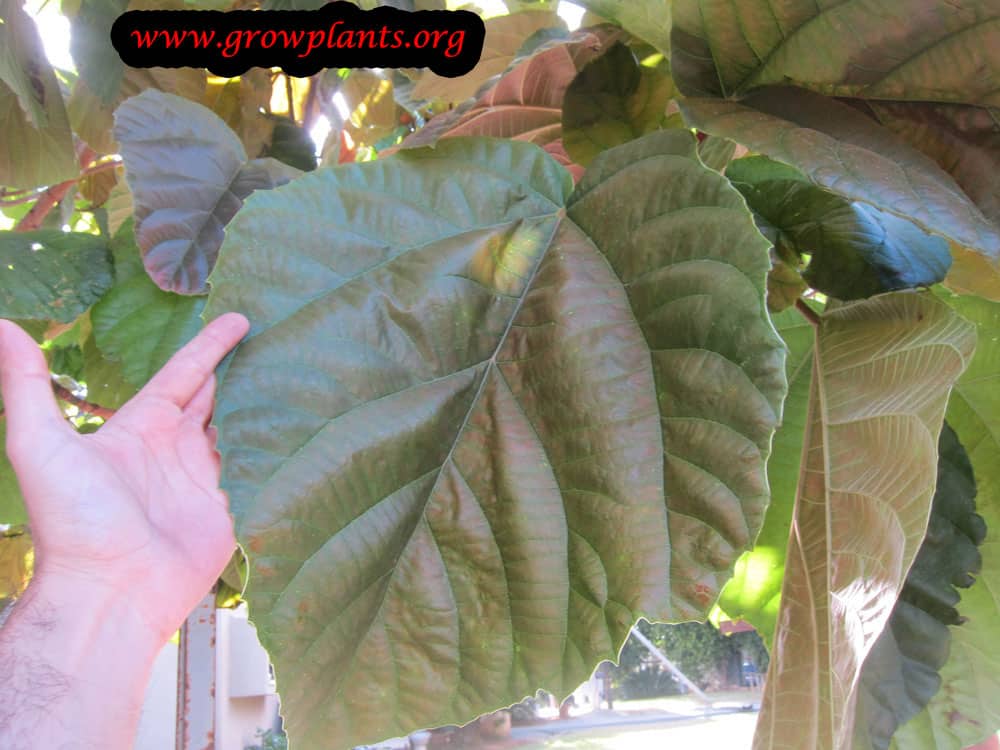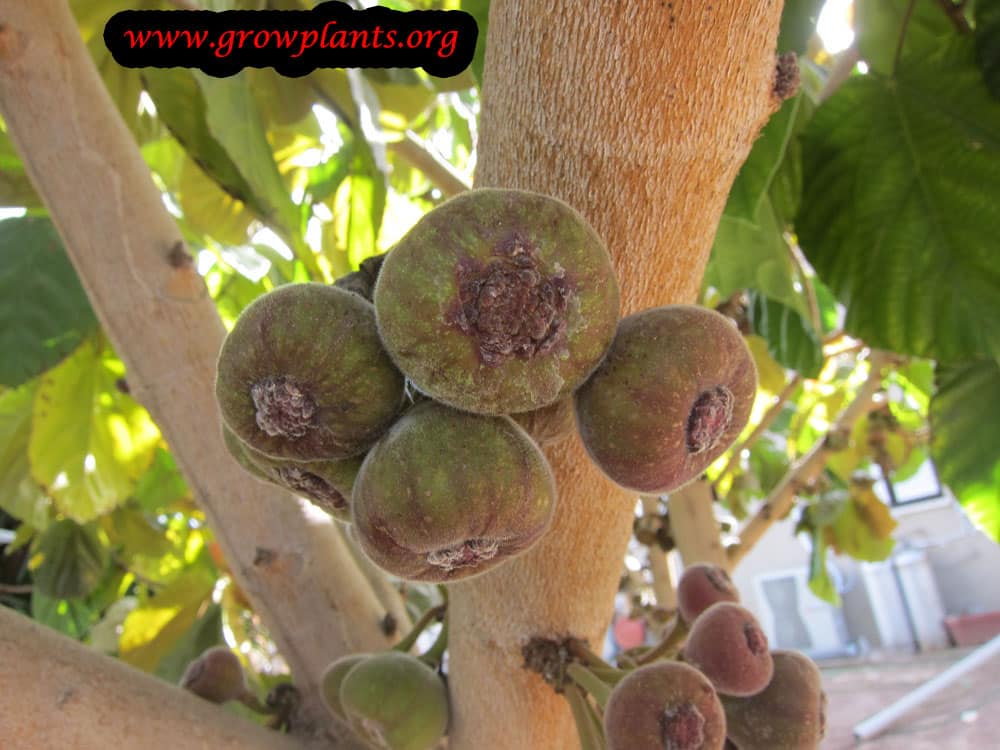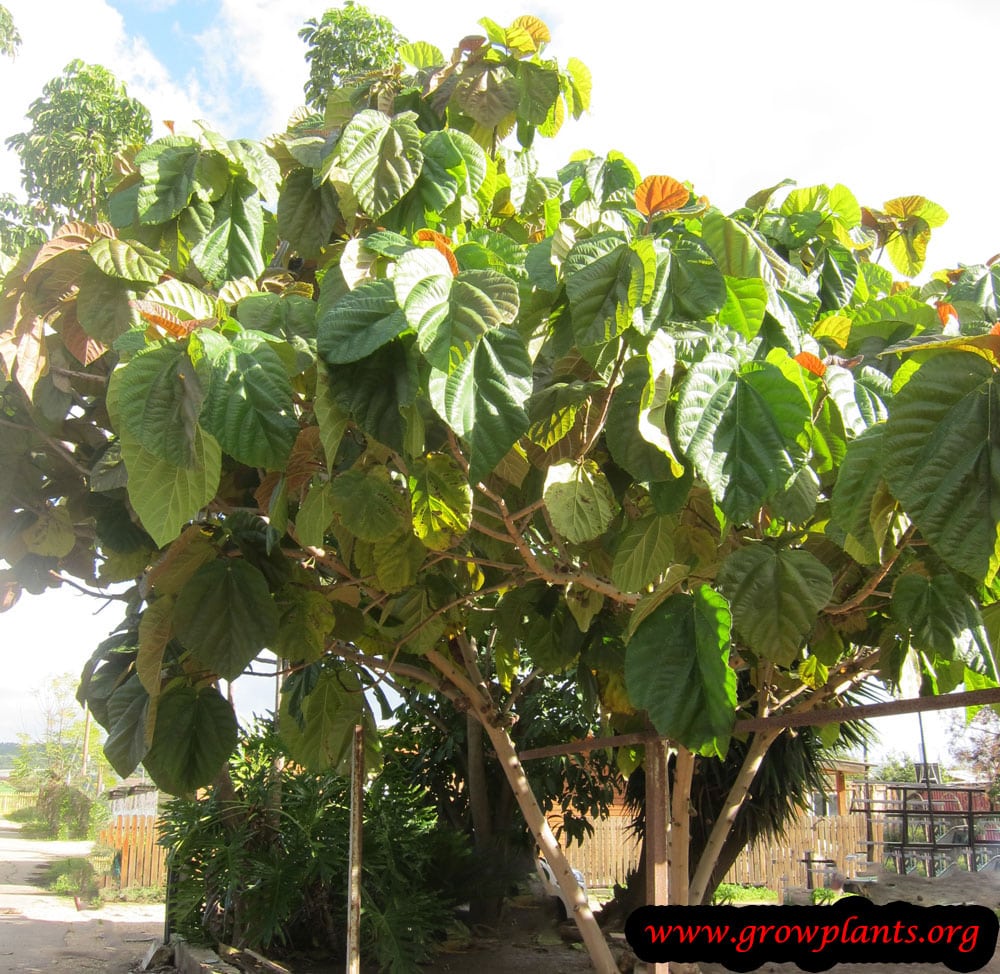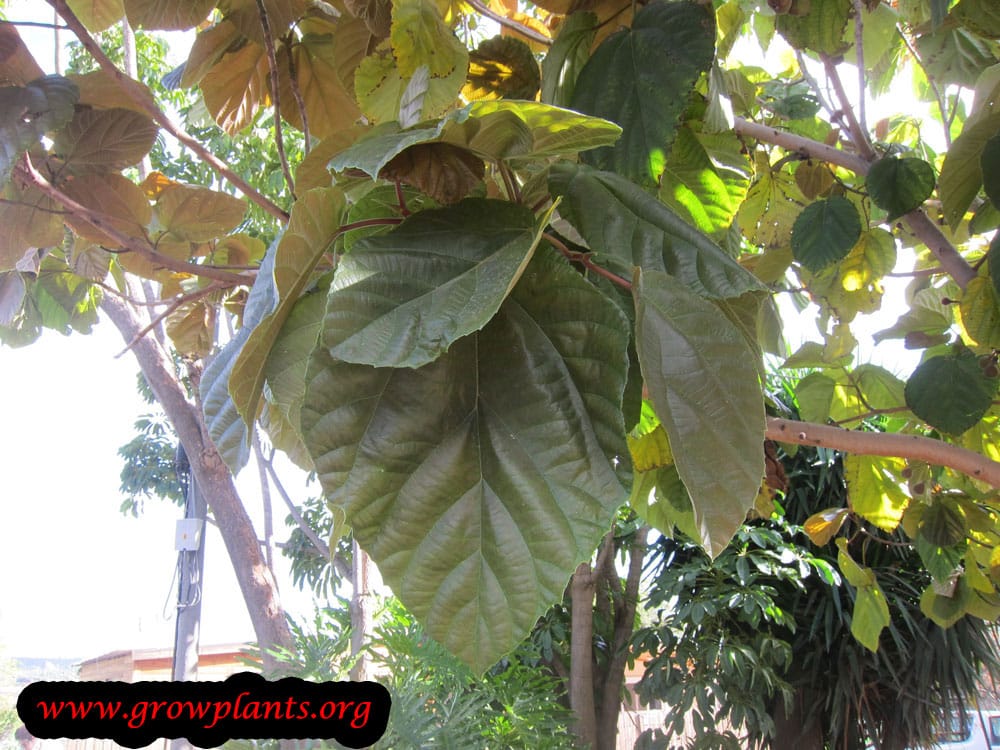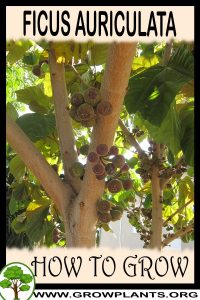
Ficus auriculata grow and care – tree of the genus Ficus also known as Roxburgh fig or Elephant ear fig tree, Ficus auriculata perennial evergreen or deciduous plant, fruits edible but mostly used also as ornamental bonsai, shade tree and the plant is drought tolerant, can grow in mediterranean, desert or subtropical climate and growing in hardiness zone 10-11 and with the right overwinter care in hardiness zone 9.
Leaves color green, and when the leaves young in red color, the shape round the leaves can be more than 30 cm.
Flower color green-pink grow in inflorescence hollow fig structure, that the flowers inside the fig.
Ficus auriculata edible fruits
Fruits are edible in teardrop-shaped the color can be purple or green.
Ficus auriculata for sale – Seeds or Plants to Buy
How to grow Ficus auriculata growing and care:
Well drain soil, mulch (especially when the plant young)
How to care:
Prune once a year, fertilize 4 time a year (when the tree is young more nitrogen), cover the soil in mulch, add humus and organic matter
What is the best way to start growing?
Plant / Seed (explanation bellow) / Vegetative Reproduction – cutting
How to propagate by cutting:
Propagation by cutting, when start from branch need to choose brown branch fully grown use root growth hormone that fit for woody branches, need to keep high humidity, moist soil and if put it in close box or greenhouse, need to be well ventilate that will moving of the air, watering by spraying or create fog and take care don’t let it dry
Is it necessary to graft or use vegetative reproduction?
Yes, it’s grow faster from cutting and can ensure the quality of the fruits, although it’s not hard from seeds
Difficulties or problems when growing:
Irritant skin
Planting season:
Spring in hardiness zone 9, spring to summer in hardiness zone 10a, spring to autumn in hardiness zone 10b, all year in hardiness zone 11
How to plant:
Dig a hole as deep bigger than the current root ball plus extra 70-100%, put in the hole organic matter, hummus and dried leaves and mix it with the soil, reduce the hole to size of the roots ball, put the tree and loos little bit the root ball above the hole, when the plant in dormant possible to cut part of the root and prune the tree, plant the tree and cover it and don’t push the soil too much strong but not too much lightly because it won’t be stable, over with mulch to keep moist on soil, put water, for the next two weeks put every day (better in the morning), and if the temperature above 30C (86F) increase the amount of water.
Pests and diseases:
Batocera rufomaculata, gall, scales, mealy bugs, thrips, whitefly, spider mite
Pruning season:
Winter, possible all the year, better after the fruits
How to prune:
Weak branches, recommend keeping the tree small
Size of the plant?
10-20m, 30-60 feet, possible to grow as dwarf 2-5m (6-15 inches)
Growth speed in optimal condition:
Fast growing / Medium growing
Water requirement:
Small amount of water / Average amount of water, the plant likes water but can grow with small amount of water it will affect the fruits and the size, too much water in the fruits season will attract a lot of pests
Light conditions in optimal condition for growing:
Full Sun / Half Shade (grow better in full sun) usually growing in half shade when the plant young and the plant will get the sun when older
Is it possible to grow indoor as houseplant?
No
Growing is also possible in a planter /flowerpot / containers:
Yes, when grow in container need to limit the growth of the plant and grow it as dwarf or bonsai need to limit the growth of the roots, container need to be 50% bigger than the root ball until the plant arrive to the desirable container, wouldn’t recommend to start from big container on small tree in this method it’s care for the viability of the soil, minimum size of the container 25-50L (5-10 gallons) and bigger is better, making enough holes in the container for good drainage also choosing soil for container important an option it’s to use potting mix or peat soil with perlite and organic matter, care instruction every few years to switch the soil with big container there is no need to switch all the soil just switch part and cut some of the roots ball (can switch from the side and the top, fertilizer at least once a year, need to add humus few better twice, water it regularly and when put bottom for the pot be aware not to let the water stay there more than one day and do not over water it’s destroy the soil and the roots, consider to graft in order to get good quality of fruits or start by cutting.
Blooming information
Bloom season:
Winter / spring
General information about the flower
Green- pink flower grow in inflorescence hollow fig structure, that the flowers inside the fig
Pollination is done by:
Fig wasp, hand pollination
Edible Fruits
Fruit harvest season:
Summer / Autumn
Fruits pests or diseases:
Birds
What can be done with big quantities of Ficus auriculata fruits?
Eaten raw, jams, dry, fruit leather
Work requirements on the fruit:
Cover the fruits with net
How long does it take to bear fruit?
3-5 years
How to grow Ficus auriculata from seeds
Sowing requirement:
Seed small, better to soak the seeds for 24 hours, germinate in temperature 21-26 (70-79F), moist soil, high humidity (better result with light fog) half shade to full sun
Saving seeds and care until sowing:
Dry and dark location
Sowing season:
Spring / Summer / Autumn (in hot climate better not in summer and in cold winter better not in the autumn, for germination the temperature it’s important and planting in the spring will be good for the growth of the seedling)
How to plant:
Better to plant the seeds in greenhouse or small plastic box that will keep high humidity
Planting spacing:
Possible 2*2cm (1*1 inch) but better 5*5cm (2*2 inches) to transplant after 5-7 leaves and not when the plant young
Depth of Sowing:
On the soil or cover 3mm, (1/8 inch)
Conditions for seeds germinate:
High humidity and temperature important for germination, light soil
Watering requires for Seeds:
Average amount of water, high humidity moist soil
Germination time:
7-21 days
Condition of seedling:
Reduce the humidity, expose slowly to sun
Varieties
Everest – large leaves in heart shape grow as dwarf or bonsai
Scientific name:
Ficus auriculata
Categories
| Blooming Seasons |
|
|---|---|
| Edible Parts |
|
| Culinary uses |
|
| Flower colors |
|
| Climate |
|
| Harvest Season |
|
| Leaf color |
|
| Ornamental parts |
|
| Plant growing speed |
|
| Plant life-form |
|
| Plant Uses |
|
| Planting Season |
|
| Plants sun exposure |
|
| Watering plants |
|
| Hardiness zone |
|


